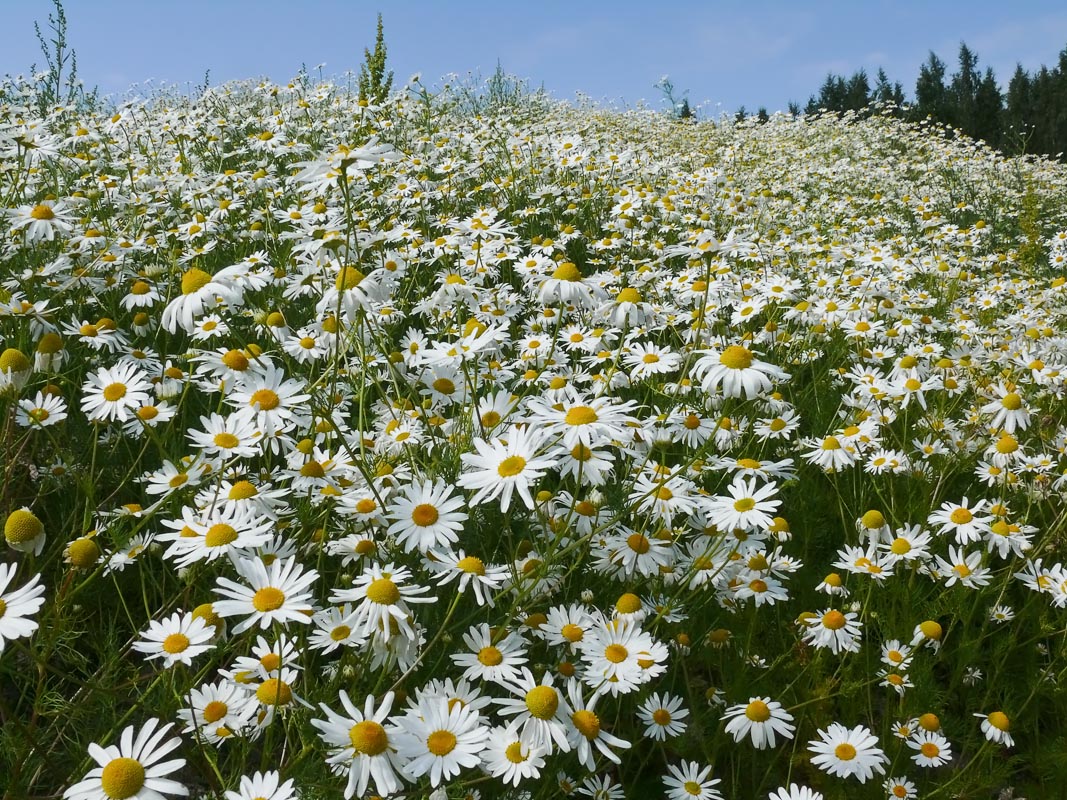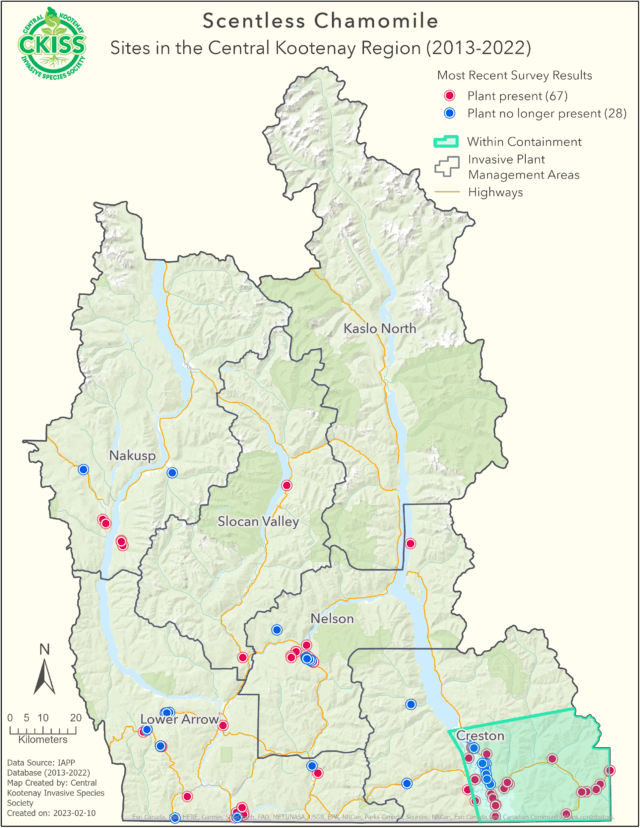Tripleurospermum inodorum
Description
- Daisy-like white flower with a yellow center at the end of each stem
- Alternate branching pattern.
- Ox-eye daisy, a similar-looking (also invasive) species has broader leaves.
- Other similar looking plants such as pineapple weed and wild chamomile have distinct odours when the leaves are crushed, while scentless chamomile has no smell.
- Mature plant has a bushier appearance than oxeye daisy.
Consequences of invasion
- Forms monocultures that reduce biodiversity.
- Reduce crop and pasture yield.
Introduction and spread
- This plant reproduces by seed only. As soon as a flower has formed, it can contain up to 1 million viable seeds. Preventing this plant from going to seed is an important management tactic.
- People transport seeds through contaminated soils, fill material, crop seed and animal feed or on clothing and equipment.
- Seeds can be dispersed naturally by wind and can float in the air for up to 12 hours
Status in the CKISS region
- Scentless chamomile is currently classified as Contain on the CKISS Annual Priority List.
- It has not been found in the Kaslo Invasive Plant Management Area (IPMA), but has been found with limited distribution in the Nelson, Slocan, Nakusp, and Lower Arrow IPMAs, where eradication is feasible.
- It is prevalent in the Creston IPMA, where the goal is to contain current infestations and prevent further spread into new areas.
- If you notice this plant growing outside of its containment area, please report it!
- To learn more about how CKISS classifies and manages invasive species, see our Invasive Species Priority Lists page.
Integrated pest management options
- Spreads only by seed – mow to reduce seed production.
- Frequent tillage prevents seedlings from establishing.
- Hand pulling before the plant is in seed will prevent new infestations from spreading.
- Be cautious of seeds in wildflower seed mixes, check the contents before planting.
- Become PlantWise and learn about Grow Me Instead
- Clean equipment, clothing and gear before leaving an infested site
- Dispose invasive species properly at designated disposal sites


